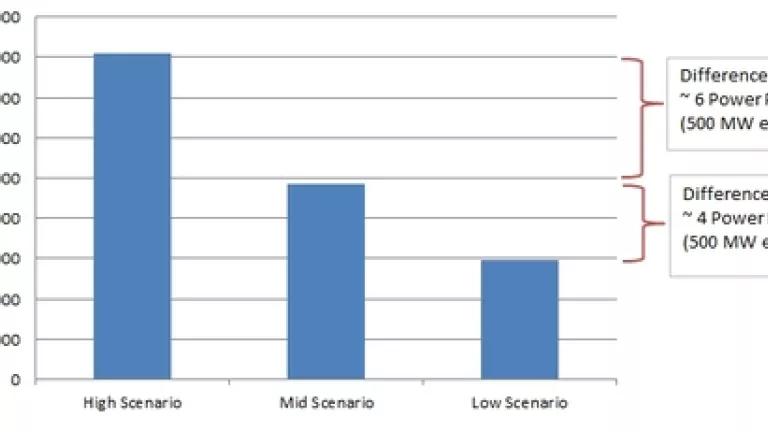
California’s energy agencies have not yet agreed on a forecast of energy savings from the state’s many energy efficiency efforts that will reduce energy demand over the coming decade, even as a vote on the final California forecast fast approaches. Failing to account for all the expected energy savings in the final forecast would put California at risk of building too many power plants, which emit asthma-causing pollution into neighborhoods around the state.
Back in February, the California Energy Commission, California Public Utilities Commission, and California Independent System Operator committed to develop a single recommended demand forecast that includes additional achievable energy efficiency, to use in their respective planning processes. This marked a change from their normal course of business over the past few years as each of them used their own forecast, and some omitted energy savings from future energy efficiency efforts altogether.
But in the California Energy Commission’s recent draft proposal, instead of coming to agreement on how much energy California can expect to save from energy efficiency, they proposed six different options. It is past time for the joint agencies to issue a proposal for an agreed-upon forecast of energy savings.
Incomplete Forecasting Risks Overbuilding Power Plants
Failing to include all reasonably expected energy savings in the demand forecast creates the risk that California could build more power plants than needed, potentially increasing energy bills and pollution. For instance, the difference between the mid and low energy efficiency scenarios alone is equivalent to four large power plants.
Underestimating Energy Savings Has Significant Consequences
A Common Forecast Is Necessary for Meaningful Public Input
We appreciate the agencies efforts to work together on energy efficiency forecasting. But the six options that they proposed do not yet narrow the range of options much, especially since a forecast of zero energy savings from future efforts (contrary to state law) is still on the table.
The recent draft proposal was expected to be the primary opportunity to get public input on the joint agencies’ recommendation before the CEC adopts the final demand forecast in the Integrated Energy Policy Report in December. But with six different options and no joint recommendation, it is difficult for the agencies to get meaningful feedback.
Therefore, the agencies should put forth a common recommendation for a “best estimate” forecast that includes all reasonably expected energy savings as soon as possible and provide an opportunity for public input before the final demand forecast is released.
The CEC Should Include All Reasonably Expected Energy Savings in Its Final Demand Forecast
Among the options the CEC presented, NRDC recommends that for they use the “Mid Case Scenario” of energy efficiency savings at a minimum for investor-owned utility energy savings. It is exceedingly reasonable, because it is a conservative estimate of future energy savings. In fact, the experts that developed the models underlying this “Mid Case Scenario” called their own estimate “conservative.” That’s because it assumes that utilities make no improvements in how they help increase the deployment of efficient technologies, among numerous other reasons.
However, the “Mid Case Scenario” excludes most savings from future publicly owned utility (POU) efficiency programs. The demand forecast should include adjustments for all the additional energy efficiency that POUs expect to save through their energy efficiency programs, which totals over 1,100 MW over the next ten years. (Their estimate also is conservative, only seeking to achieve less than half of the cost-effective savings available.) But the CEC’s forecast currently excludes the vast majority of the POUs’ savings, only including one out of ten years. It is critical that the CEC include the full ten years of future energy savings.
The joint agencies have done a lot of work this year to increase coordination on energy efficiency issues. It’s time to take this process across the finish line by including a reasonable amount of energy efficiency in the state’s demand forecast. A successful conclusion will ensure that the CPUC and ISO have the best forecasts available as they decide whether the state needs further investments in power plants, transmission lines or other resources.
